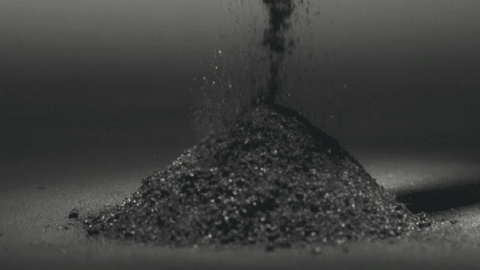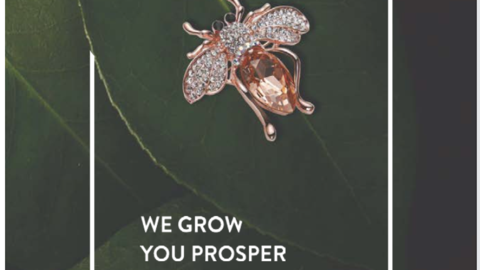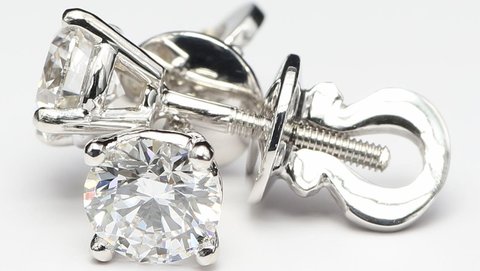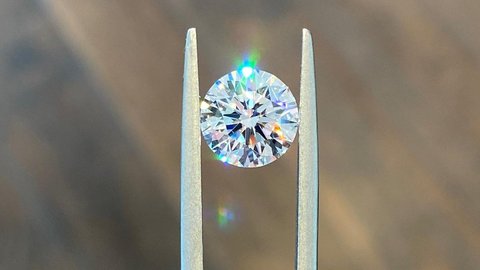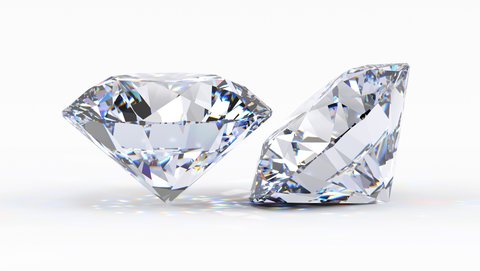The Modern Diamond Revolution: Why Lab-Grown Stones Redefine Affordable Luxury
Lab-grown diamonds have transformed the fine jewelry landscape, offering consumers the perfect balance of luxury quality and affordability. These scientifically created stones, identical in composition to mined diamonds, allow buyers to acquire larger, higher-quality gems at a fraction of traditional costs. As consumer preferences evolve toward more ethical, sustainable, and value-conscious purchases, lab-grown diamonds have emerged as the definitive affordable luxury option in fine jewelry. This comprehensive guide explores how these innovative gems are democratizing luxury while maintaining the prestige and beauty that diamond jewelry represents.

Understanding Lab-Grown Diamonds: Real Diamonds, Revolutionary Origin
Lab-grown diamonds are not simulants or imitations-they are genuine diamonds with the same physical, chemical, and optical properties as mined diamonds. The only difference lies in their origin story.
The Science Behind Laboratory Diamonds
Lab-grown diamonds are created using advanced technological processes that replicate the natural conditions under which diamonds form in the earth. There are two primary methods for creating these diamonds:
High-Pressure High-Temperature (HPHT): This process mimics the natural formation conditions using extreme pressure and heat to transform carbon into diamond.
Chemical Vapor Deposition (CVD): This newer method introduces carbon-rich gas into a chamber where carbon atoms arrange themselves into diamond crystal structures.
The resulting stones are optically, physically, and chemically identical to diamonds formed naturally underground over billions of years. Every lab-grown diamond possesses the same hardness, brilliance, and carbon crystal structure as a mined diamond.
Distinguishing Facts from Misconceptions
A common misconception is that lab-grown diamonds are "fake" diamonds. This is categorically false. They are not cubic zirconia, moissanite, or any other simulant. Independent gemological institutions grade lab-grown diamonds using the same criteria as natural diamonds-the 4Cs of cut, color, clarity, and carat weight-because they are evaluating the same material.
The Affordability Advantage: Redefining Diamond Value
The most compelling aspect of lab-grown diamonds for many consumers is their dramatic price advantage over mined diamonds, creating a new category of affordable luxury.
Dramatic Price Differences
Lab-grown diamonds typically cost 80-90% less than comparable natural diamonds. This price differential represents one of the most significant value propositions in modern luxury goods:
A one-carat lab-grown diamond costs approximately $1,000 (depending on quality), while a similar natural diamond averages around $4,200.
Since 2015, when lab-grown diamonds constituted merely 1% of diamond sales, their market share has grown exponentially, projected to reach approximately 20% by 2024.
Engagement rings have seen an even more dramatic shift, with 52% featuring lab-grown diamonds in 2024, up from just 12% in 2019 according to wedding platform The Knot.
More Diamond for Your Dollar
The substantial price difference allows consumers to pursue several advantageous options:
Size upgrade: Purchase a significantly larger diamond within the same budget
Quality improvement: Opt for superior color and clarity grades
Setting enhancement: Invest in more elaborate or artistic settings
Complete package: Combine all three advantages for truly exceptional pieces
A consumer with a $5,000 engagement ring budget might choose between a 0.9-carat natural diamond of average quality or a 2.5-carat lab-grown diamond with excellent clarity and color. This dramatic difference illustrates how lab-grown diamonds have revolutionized the concept of affordable luxury.
Quality Comparison: Meeting and Exceeding Expectations
When evaluating lab-grown diamonds against natural diamonds, the quality comparison reveals why these stones have gained such rapid market acceptance.
Identical Physical Properties
Lab-grown diamonds possess the same hardness (10 on the Mohs scale), refractive index, and dispersion as natural diamonds. This means they exhibit identical brilliance, fire, and durability-the key characteristics that have made diamonds prized for centuries.
Consistent Quality Standards
The controlled environment of laboratory creation actually offers some quality advantages:
More predictable color distribution
Fewer internal stress points
Greater clarity consistency
Reduced likelihood of undetected inclusions
Modern laboratory processes have advanced tremendously, allowing for the creation of large, high-quality stones that match or exceed the visual appeal of natural diamonds.

Shifting Consumer Preferences: The New Diamond Marketplace
The diamond industry is experiencing a fundamental transformation driven by evolving consumer values and preferences.
Generational Values Alignment
Younger consumers, particularly Millennials and Generation Z, place higher priority on:
Ethical sourcing and transparency
Environmental sustainability
Value and practicality
Personalization and meaning
Lab-grown diamonds align perfectly with these priorities. Their traceable origins, reduced environmental impact, and accessible pricing make them particularly appealing to younger buyers who question traditional luxury conventions.
Industry Adaptation
This shift in consumer preferences has forced established players to adapt:
Major mining firms like De Beers have reduced production of natural diamonds
Some traditional jewelers now offer lab-grown options alongside mined stones
New brands dedicated exclusively to lab-grown diamonds have emerged
Industry pricing structures have adjusted to accommodate this new market reality
Following a brief pandemic-driven price surge, natural diamond prices have fallen to multi-year lows, with industry data showing a 34% decline from their 2021 peak to late 2024.
Beyond Price: Ethical and Environmental Benefits
While affordability drives much of the lab-grown diamond appeal, many consumers find equally compelling value in the ethical and environmental advantages.
Ethical Sourcing Guarantees
Lab-grown diamonds eliminate concerns about:
Conflict funding through diamond mining
Exploitative labor practices
Community displacement
Supply chain transparency issues
For ethically-conscious consumers, the controlled creation environment provides peace of mind that their purchase has not contributed to human suffering.
Environmental Sustainability
Diamond mining has significant environmental impacts-disrupting ecosystems, consuming vast resources, and often leaving behind altered landscapes. Lab-grown diamonds offer a more environmentally responsible alternative:
Reduced land disruption
Lower water consumption
Decreasing carbon footprint as technology improves
Many diamond-growing facilities now use renewable energy sources
These sustainability benefits further enhance the value proposition of lab-grown diamonds for environmentally conscious consumers.
Choosing the Perfect Lab-Grown Diamond: A Buyer's Guide
For consumers interested in lab-grown diamonds, understanding how to select the perfect stone ensures maximum value and satisfaction.
Evaluating Quality Using the 4Cs
Just like natural diamonds, lab-grown diamonds are graded according to the 4Cs:
Cut: Determines brilliance and sparkle; prioritize excellent or ideal cuts
Color: Grades range from D (colorless) to Z (light yellow); higher grades command premium prices
Clarity: Assesses internal and external flaws; VS1-VS2 clarity offers excellent value
Carat: Measures weight; lab-grown options allow for significantly larger stones within budget
Understanding these quality factors helps consumers make informed decisions about value trade-offs when selecting a lab-grown diamond.
Certification Importance
Reputable lab-grown diamonds come with certification from independent gemological laboratories such as IGI (International Gemological Institute) or GIA (Gemological Institute of America). These certificates verify:
The diamond is genuine
The stone is laboratory-grown (not natural)
Accurate grading of the 4Cs
Any treatments or enhancements
Always purchase certified lab-grown diamonds to ensure you're getting exactly what you pay for.
The Future of Affordable Luxury: Predictions and Trends
The lab-grown diamond market continues to evolve rapidly, with several notable trends shaping its future.
Market Segmentation and Differentiation
As the market matures, we're likely to see:
Production technology continuing to improve
Premium lab-grown diamond brands emphasizing exceptional quality and craftsmanship
Designer collaborations creating distinctive styles
Custom and bespoke options leveraging the price advantage
New innovative cuts and colors that expand beyond traditional diamond offerings
This segmentation will create even more consumer choice within the affordable luxury space.
Redefining Luxury for Modern Consumers
Lab-grown diamonds have fundamentally changed what it means to own luxury diamond jewelry. By offering the same beauty, durability, and emotional significance of natural diamonds at a fraction of the cost, they have democratized access to high-quality diamond jewelry.
The dramatic price advantage allows consumers to enjoy larger, higher-quality stones that were previously unattainable. Combined with ethical and environmental benefits, this value proposition has resonated strongly with today's conscious consumers.
As technology continues to advance and the market evolves, lab-grown diamonds will likely strengthen their position as the definitive affordable luxury option in fine jewelry. They represent not just a product innovation but a fundamental shift in how we think about luxury, value, and consumer choice in the modern era.
For consumers seeking the perfect balance between luxury quality and accessible pricing, lab-grown diamonds offer an unmatched opportunity to elevate their jewelry collection without compromise.




